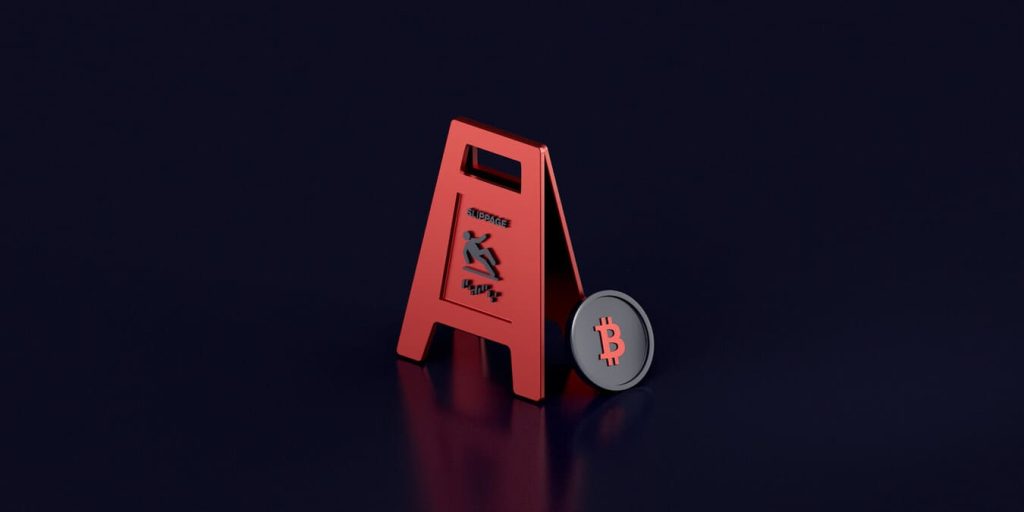
What is Slippage in Trading?
Contents
Slippage arises when a financial market transaction—stocks, currencies, commodities, or otherwise—gets done at a price different from what you were expecting. Slippage is simply the difference between your expected price and the price the deal was carried out on. Should slippage occur, traders should learn certain loss-mitigating techniques like limit orders and enhance their trading techniques by selecting the optimal trading hours.
Deep Dive into Slippage
One first has to understand what slippage is and how it shows up in the financial markets before one can really value how it affects trade. Though it occurs constantly, slippage may be somewhat different depending on the market and the orders issued.
Slippage may be defined as the difference between the price at which a deal is executed and the price at which the trader had anticipated it to be executed. The execution time of an order is where the variance occurs. In markets that move fast, prices might fluctuate in this little timeframe; so, the final execution price could vary from the initial price set up.
Positive slippage is the result when the transaction turns out at a better price than anticipated. Good for your investment, this implies you spend less than anticipated when you acquire something or earn more than expected when you sell something.
Negative slippage is the result of a trade taken at a price less than desired. When this occurs, you either receive less than anticipated when selling something or spend more than expected when you purchase something. This can cut into your trade gains.
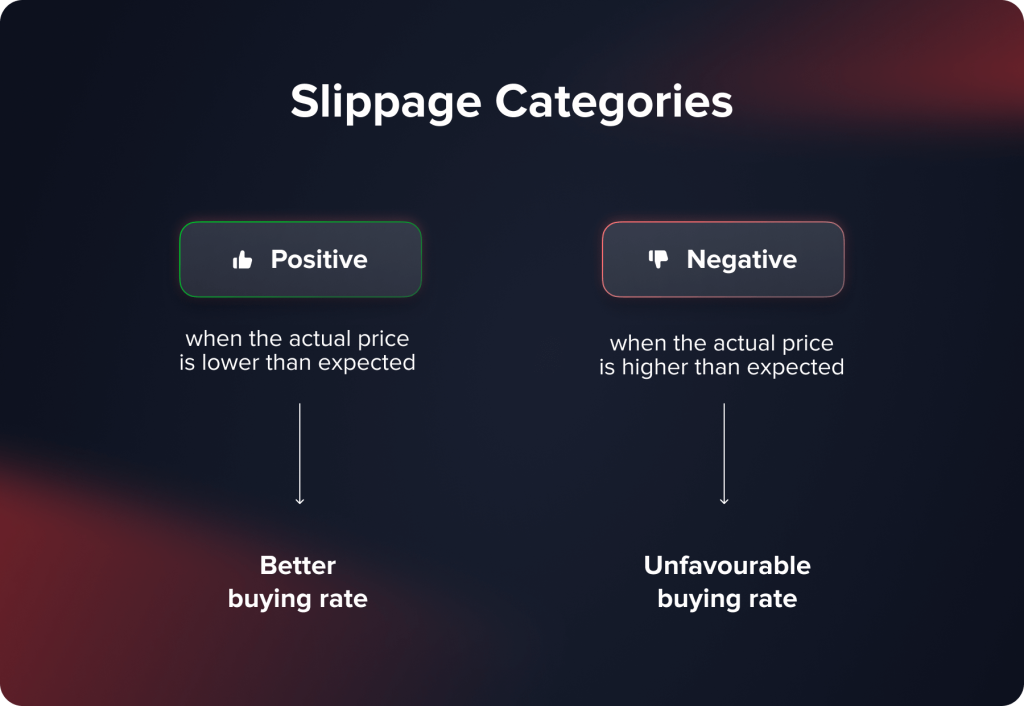
Slippage in Volatile Markets
Volatility and slippage are inseparable. Price variances become more obvious as market volatility rises. This might be impacted by the market’s response to economic data, global events, or emotional swings. The rapid fluctuation in commodity prices that results from this makes slippage both increasingly likely and more severe. At certain instances, the execution price could be significantly different from what traders expected, making it difficult to open or exit positions.
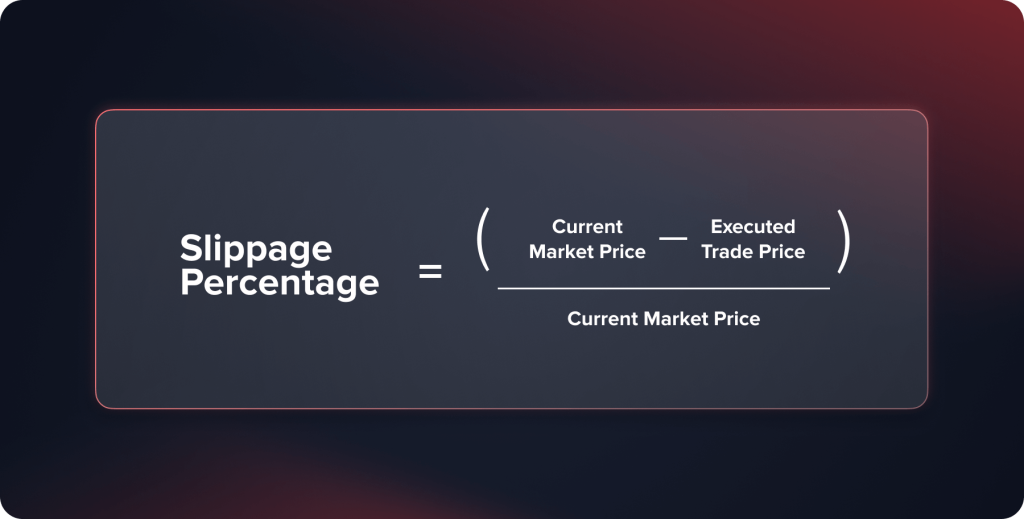
The fluctuating nature of pricing also adds to slippage. Markets are dynamic environments in which several variables constantly impact asset pricing. This fluidity implies that slippage is always possible, even in less volatile situations, since the market price at the time of order execution may differ from the price seen by the trader when placing the order.
Slippage is a normal part of trade that can bring risks and chances. Traders need to understand how it works because it affects their decisions and how well their trading methods work overall. Now, let’s consider what causes slippage and how buyers can deal with it in different market situations.
Causes of Slippage
Knowing what causes slippage is crucial for traders as it enables them to find strategies to either minimize or limit its consequences. A variety of factors may lead to slippage; each of them will affect the finished price of a transaction in a unique manner.
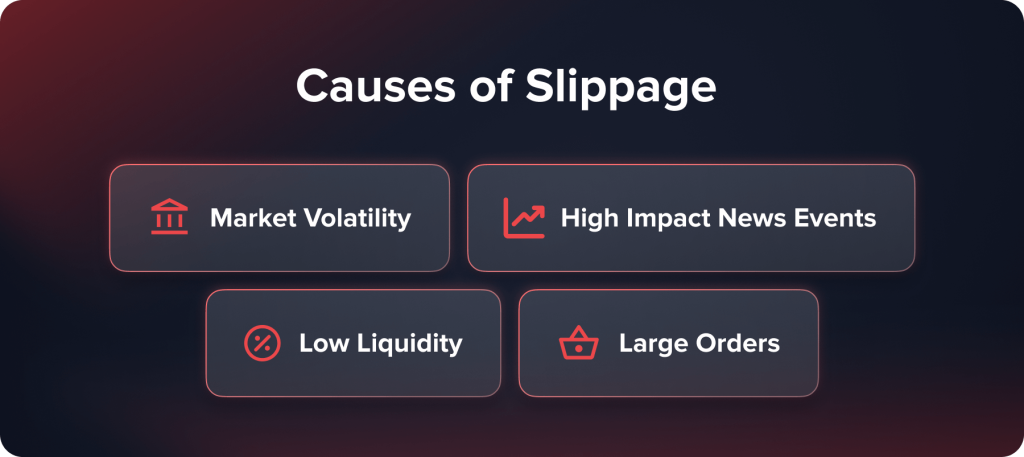
Market Volatility
This refers to the degree and frequency of financial market price swings. In highly volatile markets, prices could change drastically and quickly over short times. The main reason of extreme slippage is this rapid fluctuation. For instance, the price of a stock or currency pair may vary greatly between the time a trade order is issued and executed during times of volatility, therefore producing a notable difference between the projected and actual execution prices.
High-Impact News Events
The market may react rapidly and dramatically to events that impact it significantly, such as the announcement of economic statistics, political news, or company earnings reports. Because the market reacts and adjusts to the new information, traders often experience losses during these periods. The value of a currency, for instance, may surge sharply if a major economic report revealed that actual economic conditions were stronger than anticipated. This could affect forex trade orders that are already being carried out.
Low Liquidity
The capacity to quickly and easily purchase and sell marketable assets without a substantial change in price is known as liquidity. Limited market participants may make it difficult to process big orders without impacting prices in assets or marketplaces that are not very liquid. Slippage happens when a trade order is placed but the intended execution price does not generate enough buying or selling interest, resulting in the transaction being completed at a different price. In a lightly traded stock market, for example, even a somewhat modest order might have a large influence on the price.
Large Orders
The size of an order can also influence the likelihood and extent of slippage. Large orders, particularly in markets with limited liquidity, may consume all the orders that are accessible at the price level the trader wishes, therefore the order is completed at an other price. Slippage, for instance, might occur if a trader orders a large purchase in a market lacking sufficient selling interest at the present price. The order may be met at a higher price. It’s easier to see this effect in markets where big orders make up a big part of the normal trade flow.
Recognizing the relationship between market volatility, news events, liquidity, and order size is critical for devising effective solutions to deal with this phenomena. With this foundation, we will investigate the various effects of slippage across different markets, offering insights into how traders in different circumstances perceive and react to slippage.
Slippage in Different Markets
Though it is a natural aspect of trading, slippage manifests itself differently in various markets as every one of them operates and acts differently. During periods of great volatility and significant financial news events, slippage is very common in stock markets. It tends to affect stocks with smaller market caps or lower trading rates the most. In this case, the difference between the projected price and the actual price can get bigger, especially when the market opens and closes.
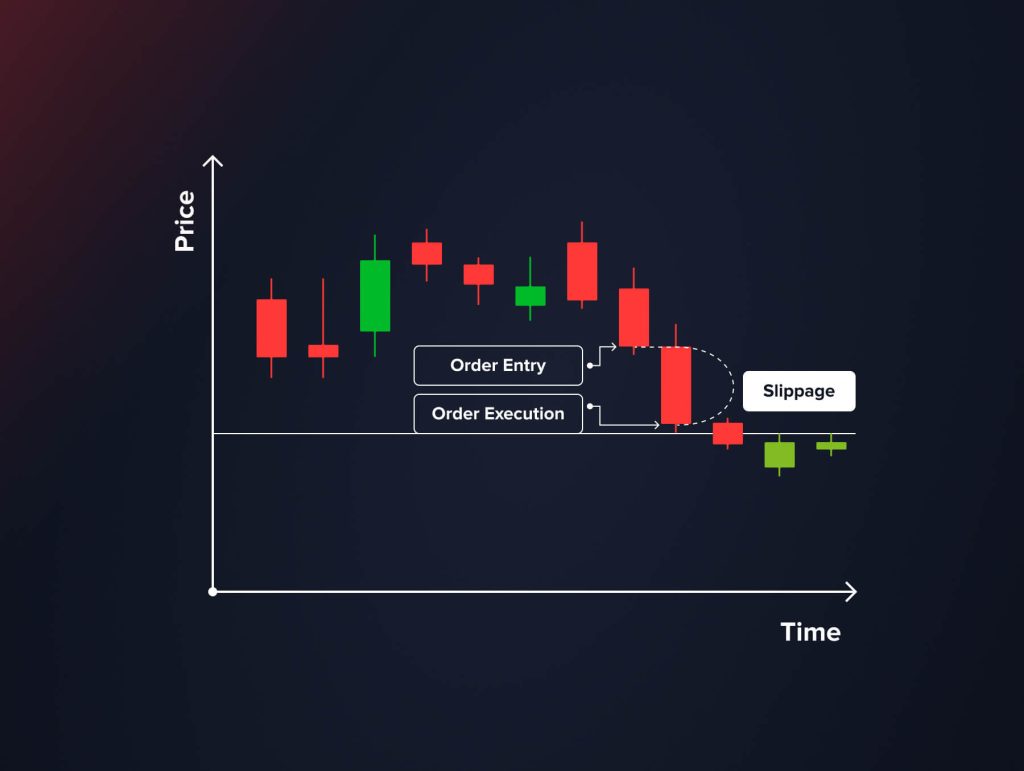
Slippage is often lower in the FX market, which is known for its great liquidity and low volatility. However, during important economic events or news releases, even this market might see quick price increases, resulting in slippage. Forex traders must use more caution at these periods to limit the risks of sudden price movements.
Usually lacking liquidity, cryptocurrencies markets are known to be somewhat erratic. Prices may therefore vary greatly, particularly for new currencies or in response to major events impacting the crypto industry. Because these markets move quickly, entry and exit points need to be carefully thought out to reduce slippage risks.
Traders need to know how slippage happens in these different markets and what causes it, such as market volume, order size, and when news events happen, in order to plan well and avoid losing too much money or having costs go up because of price changes.
Impact of Slippage on Traders
Slippage can have a big effect on traders, changing both the results of individual trades and the general strategies they use. This impact can manifest in both negative and positive ways, depending on the direction of the slippage and the market conditions.
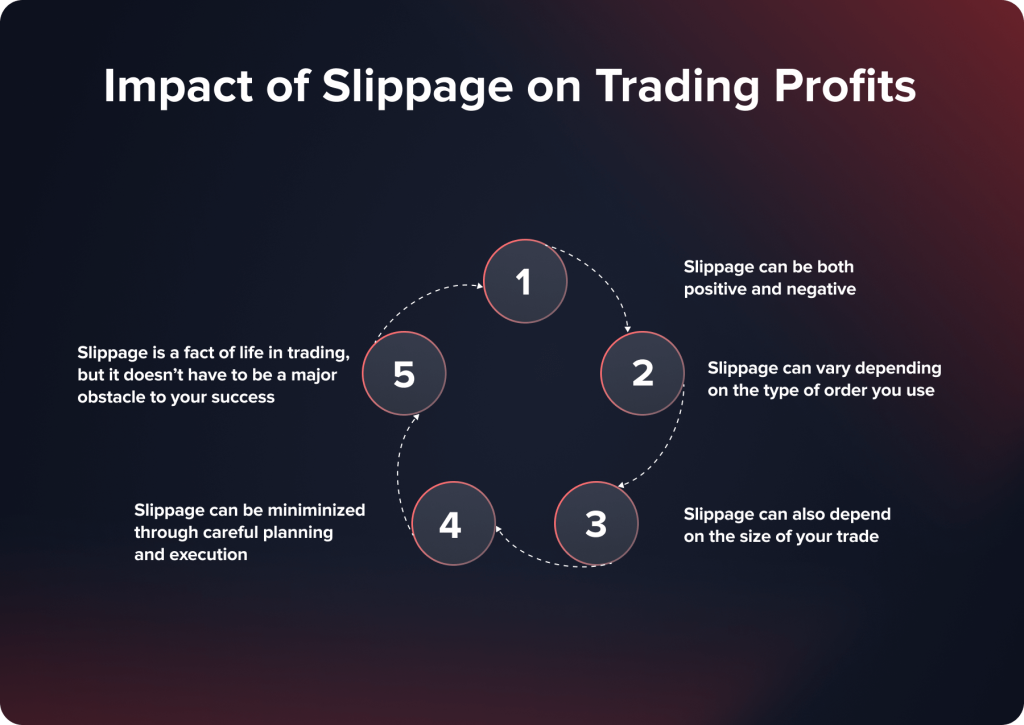
Negative Impacts of Slippage
One of the main things that traders worry about with slippage is that it can lead to losses they didn’t expect. This usually takes place when the market moves quickly against what the seller wants it to do. Should the price rise significantly before the trader’s order execution, for instance, they might have to pay more than they had intended. For stock or currency traders working in volatile markets where values fluctuate often, this is particularly difficult.
Slippage might sometimes lead traders away from their planned trading approaches. After extensive research and market projection, traders may decide on specific entry and exit areas. Slippage, however, may change carefully planned strategies and force traders to enter and quit deals at less-than-ideal prices. For tactics like scalping, which rely on minute price adjustments to generate profit, this disruption may be very negative.
Positive Impacts of Slippage
Though most people see slippage as a negative event, it may sometimes result in unexpected benefits. Positive slippage is the result when a deal’s execution price exceeds its anticipated price. Should the market turn in a trader’s advantage within the brief period between order placement and execution, the sell order may be completed at a higher price. Even though this kind of event doesn’t happen very often, it can give buyers better-than-expected profits.
Positive slippage often depends on how the market is doing and what kinds of orders are being utilized. For instance, there may be greater potential for positive slippage in markets with a lot of activity and quick order filling. This is especially true if traders use limit orders to set the lowest price they’re willing to accept.
Strategies to Minimise Slippage
Effective trading requires meticulous control and the minimization of slippage to the greatest extent possible. Traders possess a range of strategies to alleviate the adverse impacts of slippage on their transactions.
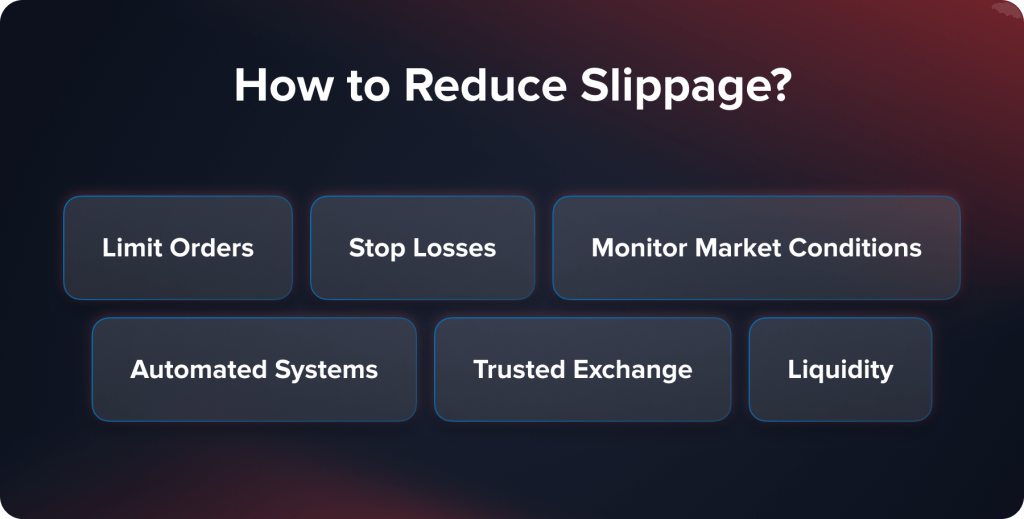
Trading in Highly Liquid Markets
Trading in highly liquid markets is an effective way to reduce slippage. High liquidity marketplaces often have a large number of buyers and sellers. Trades may therefore be done quickly and most likely at the desired price. Major currency pairs in the forex market, such as EUR/USD or USD/JPY, often see a high volume of transactions, reducing the probability of substantial slippage. Typically, stock traders are interested in blue-chip stock, which are more liquid than smaller-cap corporations.
Using Limit Orders
One other excellent approach to minimize slippage is via limit orders. Using a limit order, sellers are presumably expressing the lowest price they are ready to accept when selling something or the maximum price they are ready to pay for anything. This guarantees that the trade may only take place at a level the seller finds comfortable. This protects against mistakes and sudden changes in the market. You might miss out on a trade if the market doesn’t hit the price you set, but you have more control over the trade’s execution price, which makes it a useful way to handle slippage risk.
Avoiding Trading During Major News Releases
Important economic and news events can make the market very volatile and increase losses. Refraining from trading at these periods helps traders reduce their loss risk. By timing their transactions around the publication of significant economic data, central bank announcements, or political events, traders may avoid periods when markets are most likely to rise or fall. For this strategy to work, you need to keep up with the financial calendar and know when news breaks like these are planned.
Implementing these tactics may assist traders in navigating the intricate workings of various markets and minimizing the effect of slippage on their transactions. While it is hard to fully eliminate slippage, learning how to reduce its frequency may lead to more accurate and predictable trading results.
Conclusion
To trade successfully in the volatile markets of stocks, forex, and cryptocurrencies, you need to understand and manage slippage well. The article explained what slippage is, how to avoid it, and why it happens. It emphasized how important it is to trade in open markets, use a limit order or a market order, and be careful around news events that could affect the market. With this information, traders can better understand how the financial markets work, which can help them avoid surprises and make their trading plans better. In the end, understanding slippage is a necessary step toward smarter, more efficient, and more successful dealing.
Updated:
December 18, 2024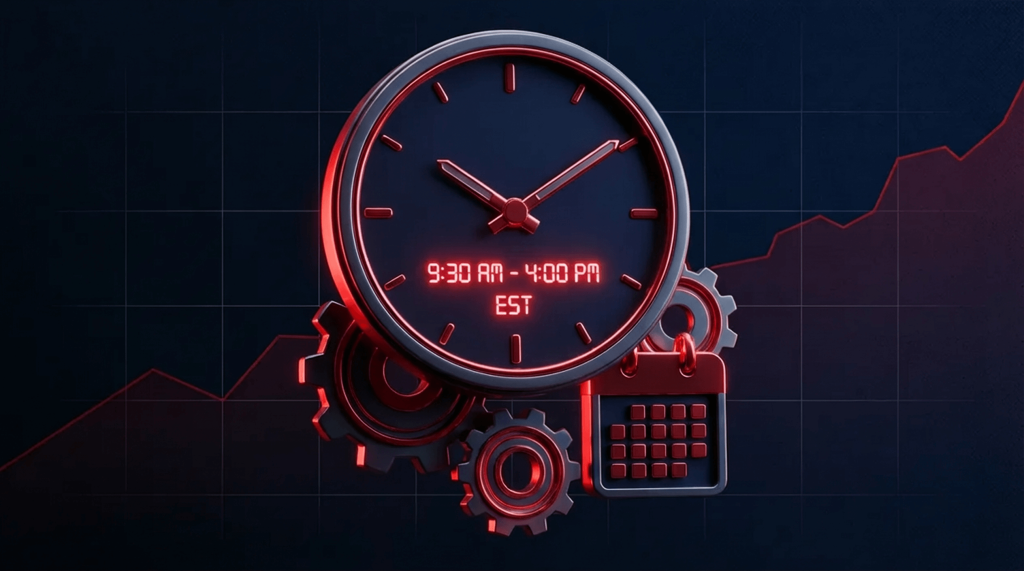
8 January, 2026
Stock Market Hours: When Does The Market Open?
Most major stock markets are open Monday to Friday, with opening times depending on the exchange and its time zone. For example, US stock markets open at 9:30 AM ET, while the London Stock Exchange opens at 8:00 AM UK time. There is no regular stock trading on weekends. Below, you’ll find a clear, practical […]



